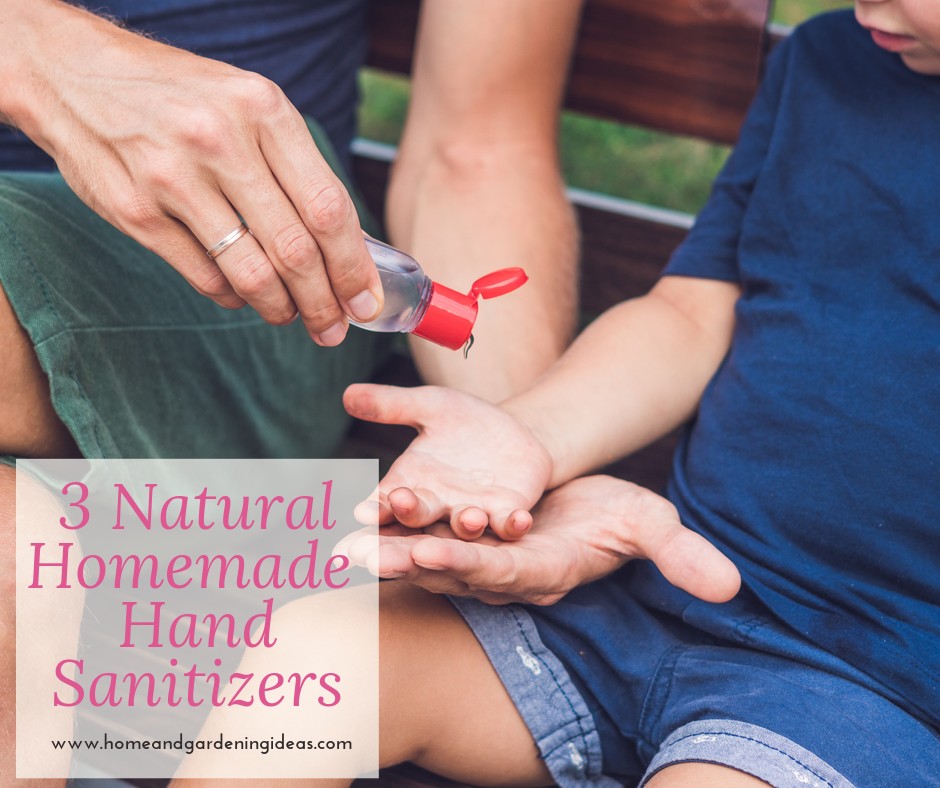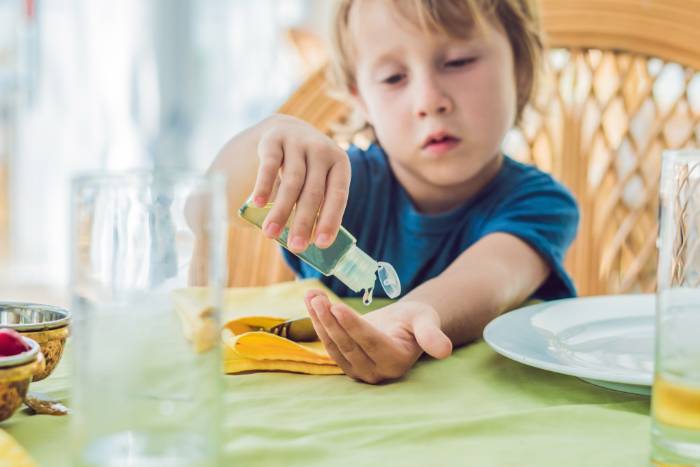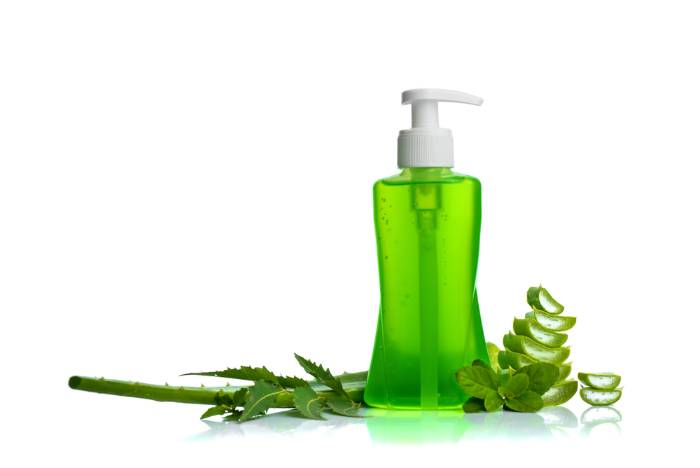3 Natural Homemade Hand Sanitizers

There are two ways you can get rid of harmful microbes from your hands: through proper handwashing with soap and water or by rubbing your hands with hand sanitizer. The former method acts by suspending the microbes on your hands, on your oily skin, between your fingers, and under your nails in the running water to remove them from your skin; while the latter method acts by killing the microbes on your hands through its chemical constituents.
Your hatred for bacteria, fungi, viruses, and other pathogens might let you condemn these microorganisms to death; but scientists have made it known that washing our hands with soaps and water is a better option than using hand sanitizers: for many reasons.
A lot of complaints have been filed against using commercial hand sanitizers because many of them contain potentially dangerous chemicals.
Alcohol, an important constituent of most commercial hand sanitizers is one of the most easily absorbed chemicals into the bloodstream and its aromatic scent attracts children to it. You know what that means? Children get easily intoxicated either by drinking directly from hand sanitizer bottles when no one is watching or when it gets easily absorbed through their delicate skin when used in rubbing hands.
Triclosan, another constituent in some commercial hand sanitizers has been found to have several adverse effects on body hormones. Some essential oils used in some hand sanitizers have been linked to several allergic reactions in different users.
Although most commercial hand sanitizers promise to kill 99.9℅ of the microbes on your hands, an enticing promise indeed, the truth is that the remaining 0.1% constitute the most harmful of all the microbes you will find on your hands. Such stubborn, pathogenic little beings include Cryptosporidium, Clostridium, Salmonella, E. coli, and norovirus.

Moreover, most commercial hand sanitizers do not only kill dangerous microbes, but they also kill the good ones that keep the dangerous ones at bay. For instance, the U.S. Centers for Disease Control and Prevention discovered, through a 2011 study, a 600% increase in the chance of getting norovirus, the pathogen that causes viral gastroenteritis (stomach flu).
Now, no matter how badly hand sanitizers have been painted, there are circumstances where your best shot at keeping yourself and your kids away from the flu is to use hand sanitizers.
U.S. Centers for Disease Control and Prevention has confirmed that washing your hands with soap and potable water is just as efficient in removing germs from your hands as using hand sanitizers. Generally, in situations whereby you can’t find either soap or/and water, then you should opt for hand sanitizers if you can find it around.
Also, the same agency recommended the use of hand sanitizers in hospital settings and the food and drug production industries to ensure the sterility conditions necessary for activities in such places.
Moreover, there are DIY hand sanitizers you can opt for at home and on-the-go, either alcohol-based and alcohol-free hand sanitizers, depending on your needs and safety.
Although the alcohol-based hand sanitizers usually contain between 65-95% alcohol and they are always more potent than the alcohol-free hand sanitizers, you’re advised to limit the use of alcohol-based hand sanitizers as much as possible while Triclosan should be avoided under all circumstances.
It is because of the relative safety and dangers in the use of hand sanitizers that you need to know the real constituents of those you opt for. There is no better way to do this than taking charge and making your own DIY hand sanitizers at home. That way, you’re sure to pick your recipes and ingredients carefully and as needed for different purposes and occasions. Go through the following set of recipes and see which one of them could be useful for you at home, in your school, in your supermarket, or in your hospital.
Best Natural Homemade Hand Sanitizer Recipes

1. Simple Natural Homemade Hand Sanitizer Recipe (Alcohol-free and Kid Safe)
Ingredients
- 1/4 cup Aloe Vera gel
- 20 drops essential oil(s)
Instructions
Add all the ingredients in a bottle, then shake vigorously for 20 seconds. Your homemade hand sanitizer is now ready.
2. Alcohol-free Natural Homemade Hand Sanitizer (For General Purpose)
Ingredients
- 1 Tbsp. witch hazel extract (must be at least 85% by volume)
- 1 cup 100% Aloe Vera gel
- 30 drops tea tree essential oil
- 8-10 drops essential oil(s) for scent (Lavender, Rosemary, Cedarwood, or Sage)
- ¼ tsp. pure vitamin E oil (optional)
Instructions
Mix, vigorously, all the essential oils and Vitamin E in a small bowl. Then add the witch hazel to the resulting mixture and mix again. Mix the Aloe Vera gel with the mixture in the bowl now. You’ve made a hand sanitizer! You can pour in a pump or spray bottle to be used when needed.
3. Alcohol-based Homemade Hand Sanitizer (Triclosan free, Keep Away From Kids)
Ingredients
- 1 tbsp. rubbing alcohol
- 1/4 cup Aloe Vera gel
- 1/2 tsp vegetable glycerin (optional)
- 20 drops antimicrobial essential oil or a combination of essential oils (tea tree essential oil or/and cinnamon essential oil)
- Distilled/Potable water
- 2 drops additional essential oil(s) for fragrance as desired (such as orange, lemon, and lavender essential oils)
Instructions
The ingredients are best mixed in a bottle. Mix the rubbing alcohol, Aloe Vera gel, and optional glycerin in the bottle and shake vigorously for 30 seconds. Add all the essential oils in the recipe and shake again for 15 seconds. Add the distilled water as desired for consistency and shake for another 20 seconds. You have just successfully made a hand sanitizer.
This particular formulation is as potent as commercial hand sanitizers. You can now store or use as needed using pump bottles or spray bottles. Use amber-colored bottles for storage.
NOTE
- Ensure that the witch hazel you use is not less than 85% concentrated because the less concentrated it is, the more alcohol content it has.
- The concentration of the ingredients in your homemade hand sanitizer are very important for its effectiveness. Ensure you make adequate adjustments in other ingredients whenever you alter one ingredient for another ingredient.
- Ensure that the Aloe Vera gel used in all of the recipes as this is what causes the product to become gelled so as to ensure the stability of the product during storage.
- All pregnant women must avoid the use of essential oils and all essential oils used in the formulation must be approved by your General Practitioner to avoid unanticipated sensitivity.
- As versatile as hand sanitizers are, they are not useful when your hands are visibly dirty due to their mechanisms of action.
- Do not apply hand sanitizers on broken skin, the alcohol in the solution will cause a very painful burning sensation and, although it may kill some germs, it may also kill the skin tissues around the wound: thereby slowing down the healing process.
- Both cold water and warm water are adequate for handwashing; inasmuch as the water is potable.
Stay Clean and Safe ♥️
 Home and Gardening Ideas At home and Gardening ideas we believe inspiring readers about homesteading, self sufficiency
Home and Gardening Ideas At home and Gardening ideas we believe inspiring readers about homesteading, self sufficiency





